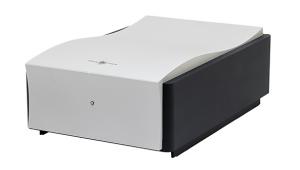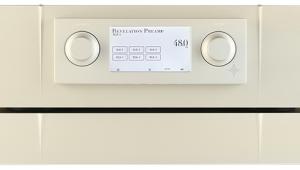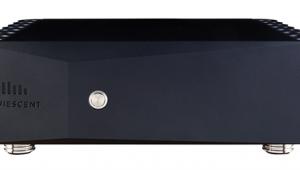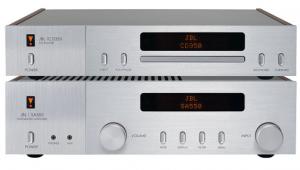Micromega M-150 DAC/amplifier
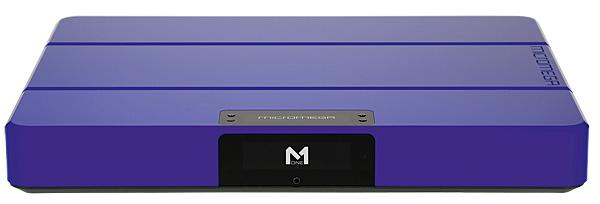
 This slimline amplifier from an established French brand may suggest another product from the same country, but it's a very different prospect with some unique features
This slimline amplifier from an established French brand may suggest another product from the same country, but it's a very different prospect with some unique features
So, it's a slimline amplifier, and it's French – already thinking of the 'D' word? But while it might seem that the M-One amplifiers from Micromega could be 'inspired' by the success of Devialet's range, in fact they have little in common beyond their country of origin and a passing resemblance in dimensions: under the skin they're very different animals.
There are two models in the range, of which the £5390 M-150 here is the more powerful, advanced – and, of course, expensive. Its companion model, the M-100, is priced at £3490. Both share the same low-slung styling, and are also resolutely based around conventional amplifier design thinking, rather than the analogue/digital hybrid technology of their compatriots in Paris.
Fan-Tastic Boxfull
How has Micromega managed to cram standard Class A/B power stages, rated at 150W/8ohm – and, as PM's lab results show , delivering a bit more than that – into an enclosure standing less than 6cm tall complete with its spiked feet? Well, a lot of it is down to clever heat-management, with a central heatpipe for convection cooling aided by a small, silent fan under thermostatic control, the only outlets being visible on the two side-panels.
But while the 'engine room' may be all-analogue, what goes before manages to combine directness and flexibility, making this one of the most versatile amplifiers to have passed through the HFN listening room in a good while. Hidden away under the rear overhang of the casework, which tidies all the messy wiring away from sight, are not just simple analogue and digital inputs, but an extended range of both.


The M-150 has both RCA and balanced XLR connections, not to mention an MM/MC phono stage and balanced/RCA preouts and a mono subwoofer output, while the digital provision starts with coax and optical S/PDIF and AES/EBU plus USBs – Type A ports for storage media and asynchronous Type B for a computer connection. There's also a pair of HDMI sockets wired to accommodate the I2S format. The LAN port, meanwhile, facilitates control of the amplifier via a dedicated app and supports UPnP/DLNA streaming while its wireless connection handles Bluetooth 4.0 with aptX.
The electrical S/PDIF digital inputs are all transformer isolated to keep noise at bay, while the USB Type-B is galvanically isolated from the rest of the amplifier using optocouplers. Depending on the digital inputs chosen, the M-150 can handle file formats up to 768kHz/32-bit and DSD all the way to DSD256/11.2MHz [but see PM's Sidebar]. Micromega's choice of converter is the celebrated 'Velvet Sound' AK4490 DAC from Asahi Kasei, last seen in these pages in the ATC CDA2 Mk2 player/DAC/preamp [HFN April '18].
In addition the USB-A ports can be used to update the product when required or activate extra features as and when these might become available, while the HDMI I2S sockets are also designed 'to handle future extensions such as wireless point-to-point or network connections', according to Micromega.
Incidentally, all the labelling for the inputs is on the base of the amplifier, and given that the rear is pretty tightly packed with sockets, I'd suggest hooking it all up with the amp standing (suitably protected) on its front panel, or with reference to the chart in the manual. The M-150 weighs around 10kg, and you really don't want to try wiring it up holding it over your head!
Mars In Focus
OK, so this amp has a pretty comprehensive specification, but it isn't quite done yet, for it also has a novel headphone output complete with processing to create a binaural effect (which I must say I could take or leave) from conventional music sources, and built-in room-correction/equalisation, for which a plug-in measuring microphone is provided. This MARS (Micromega Acoustic Room System) technology, along with the binaural headphone system, is standard on the M-150 but is a £890 option on the less expensive M-100.
It's unusually simple to use, with no need for computers or any ancillary equipment – everything you need comes in the box with the amplifier, including a substantial tablet-shaped remote handset. With the microphone plugged into a dedicated port on the rear panel, it's just a matter of initiating measurements using the front-panel buttons and menu system, then moving the mic a couple of times as it takes readings at the main listening position and some 20cm to the left and right.





